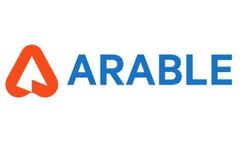Ndvi Monitoring Articles & Analysis: Older
12 articles found
Precision agriculture is a revolutionary approach that leverages technology to optimize farming practices. Precision agriculture systems offer a modern solution to these age-old problems, enabling farms to enhance productivity, reduce waste, and improve sustainability. ...
2-minute read To achieve the desired quality of wine, grapes need to be harvested at a specific maturity level. A key determinant of maturity is grape sugar levels. In simple terms, sugar levels at the time of harvest determine the alcohol content of the wine produced, but it goes beyond that to affect the characteristics and temperament of the wine. Predicting when grapes reach the desired ...
Current practices Regular monitoring of vine health variability in the vineyard can be difficult, especially with manual estimation methods. ...
The cameras we use on fixed wing and drone aircraft capture visual picture images (RGB), near infrared images (NIR), and thermal images. A formula is used to analyse the NIR data returned and provides Pollen Systems with two main metrics to measure plant vigor: NDVI (Normalized Difference Vegetation Index) and NDRE (Normalized Difference Red Edge). These vegetation indices are each unique ways to ...
An Agricultural Technologist mainly does two things that keep Pollen Systems flying: researching crops and drawing maps! Agricultural Technologists are often studying ways to improve our analytics and best serve our customers. However, the bulk of the work during the Pacific Northwest growing season is analyzing imagery collected by our pilots and packaging it into periodic updates for our ...
There’s no doubt that spring is one of the busiest times of the year for farmers and agronomists. Activities carried out during spring make foundation for the whole season and have crucial impact on quality and quantity of yields. Nitrogen application is one of the key actions that growers take to ensure stable crop development. When winter crops enter the stroke phase, the absorption of ...
BySolvi AB
UNL and Nature Conservancy partner with Arable to establish a network of sensors for better access to local weather data. Fifty miles is a long way to drive to check a rain bucket on a center pivot. That's the challenge Chase Johnson dealt with whenever he wanted to know exactly how much rain fell on one of his ...
ByArable
The wine industry has been using aerial imaging to measure vine vigor for decades. It is becoming more and more common for vineyard managers to use vigor maps to support their decision making in the field. These maps most often use the Normalized Difference Vegetation Index (NDVI) to measure vine vigor. NDVI has been the standard in the wine industry since the Mondavi Project in 1992. NDVI is a ...
ByVineView
The Rise of Precision Scouting Drones A few weeks ago, I attended a summit at Louisiana State University regarding precision scouting drones and their application in agriculture. It was a wonderfully informational gathering of agronomists, producers, and a few lucky industry types like myself. Professors and agronomic experts from the LSU Extension Service presented their views, experiences, ...
Not all NDVI is created equal Normalized difference vegetation index (NDVI) imagery products have become increasingly common in precision agriculture applications. More companies are offering NDVI and NDVI-like products, including “Synthetic NDVI” images from drone platforms. At Sentera, it is our mission to provide you only the most valuable crop health data, which is why all of our ...
Vine leaf area index has a great impact on berry quality. This study was conducted to determine whether vine leaf area index could be estimated, and mapped through normalized difference vegetation index (NDVI) ground-based measurements. The NDVI measurements were performed using a Greenseeker (N-Tech Industires, Ukiah, CA and Oklahoma State Univ., Stillwater), pointed sideways at the vertical ...
Calculating forage availability is challenging for managers of grazing systems due to the spatial heterogeneity of swards. Remote sensing applications may help to overcome this problem through estimates of biomass made with reflectance data. The objectives of this study were to (i) estimate herbage mass using an active, on-the-go, ground-based, narrow band sensor to calculate the normalized ...








